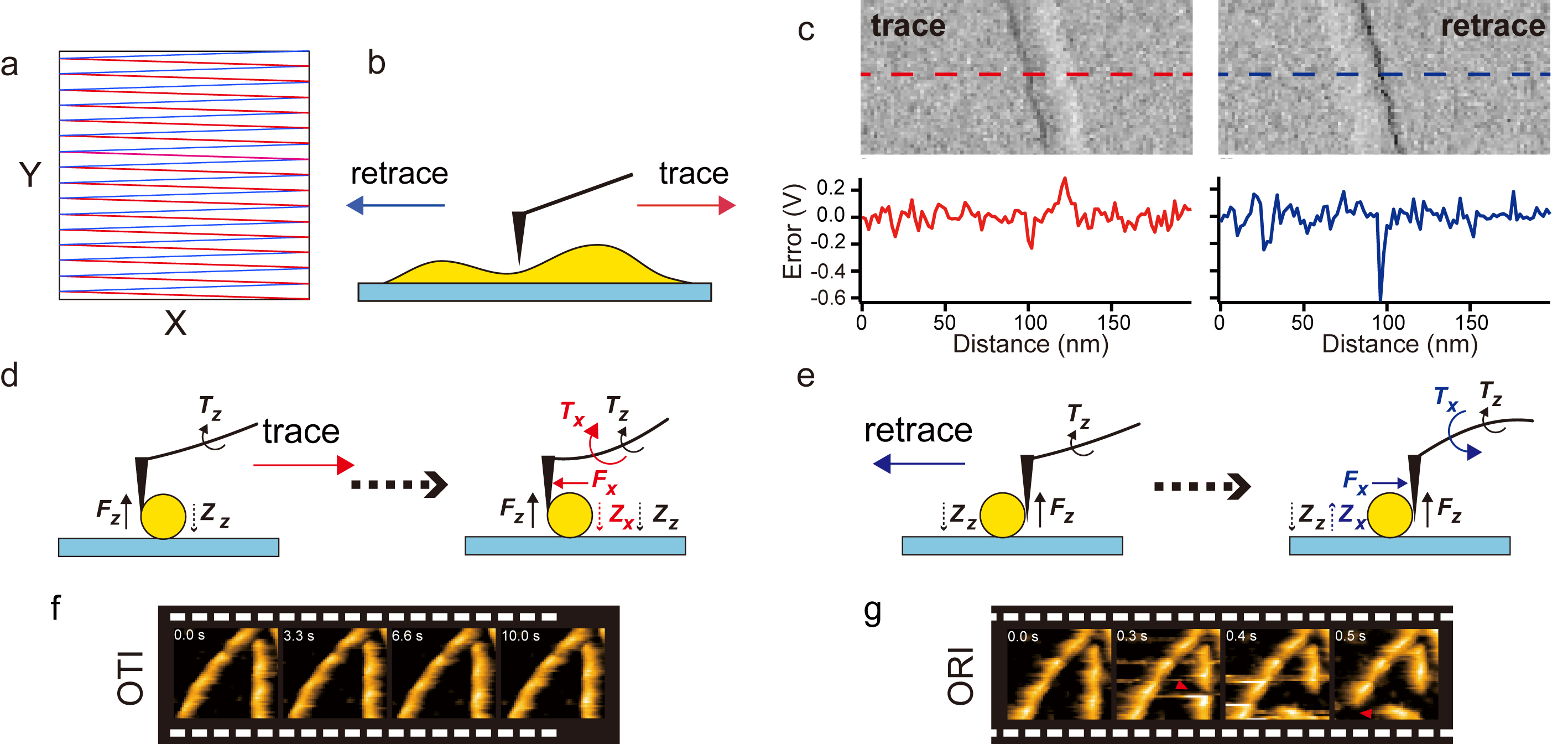Abstract:Researchers at Kanazawa University report in Review of Scientific Instruments a newly developed atomic force microscopy approach for imaging biological samples and processes. The method offers higher frame rates and less disturbance of samples.
High-speed atomic force microscopy (HS-AFM) is an imaging technique that can be used for visualizing biological processes, for example the activity of proteins. Nowadays, typical HS-AFM frame rates are as high as 12 frames per second. In order to improve the capabilities of the method, so that it can be applied to an ever expanding range of biological samples, better video rates are needed, though. Moreover, faster recording times imply less interaction between the sample and the probe — a tip scanning the sample’s surface — making the imaging procedure less invasive. Now, Shingo Fukuda and Toshio Ando from Nano Life Science Institute (WPI-NanoLSI), Kanazawa University have developed an alternative HS-AFM approach to increase the frame rate up to 30 frames per second.
An AFM image is generated by laterally moving a tip around just above a sample’s surface. During this xy-scanning motion, the tip’s position in the direction perpendicular to the xy-plane (the z-coordinate) will follow the sample’s height profile. The variation of the z-coordinate of the tip then produces a height map — the image of the sample.
Fukuda and Ando worked on HS-AFM in the so-called amplitude-modulation mode. The tip is then made to oscillate with a set amplitude. While scanning a surface, the oscillation amplitude will change because of height variations in the sample’s structure. To get back to the original amplitude, a correction to the tip-sample distance needs to be made. How large the correction needs to be is related to the sample’s surface topology, and is dictated by the so-called feedback control error of the setup. The scientists noted that the feedback control error is different when the tip moves in opposite directions, called tracing and retracing. This difference is ultimately due to the different physical forces at play when the tip is ‘pulled’ (tracing) and when it is ‘pushed’ (retracing).
Based on their insights into the physics of the tracing and retracing processes, Fukuda and Ando developed an imaging regime that bypasses retracing. This then needs to be properly accounted for in the controlling algorithm. The researchers tested their only-trace-imaging mode on actin filament samples. (Actin is a protein very common in cells.) The imaging was not only faster, but also less invasive — the filaments broke much less frequently . They also recorded polymerization processes (through protein–protein interactions); again, the method was found to be faster and less disturbing compared to the standard AFM tracing-retracing operation.
The scientists are confident that their “simple and highly effective method will soon be installed in the existing and upcoming HS-AFM systems, and will improve a wide range of HS-AFM imaging studies in biophysics and other fields.”

Figure 1. Difference of invasiveness between trace and retrace scanning processes
(a) Raster scanning: Trace scanning (red line) and retrace scanning (blue line) of the sample stage,
(b) directions of tip scanning relative to sample in trace and retrace scanning processes,
(c) difference in feedback control error between the trace and retrace scanning processes. Error images of the actin filament oriented nearly along the Y-axis (top) and the error profile (bottom),
(d, e) difference in the directions of torques produced by lateral and vertical forces exerted on the cantilever from the sample during trace (d) and retrace (e) scanning processes,
(f, g) HS-AFM images of actin filaments captured at 10 fps in the OTI (f) and ORI (g) modes. In the ORI mode, actin filaments were quickly broken.

Figure 2. The circuit installed for the OTI mode and its operation.
(a) During retrace scanning, a DC offset signal (Aos < 0) is added to the amplitude signal (A). The feedback control operates as if the probe were in strong contact with the sample, and thus the sample stage is moved away from the tip.
(b) Driving signal for X-scanner in the OTI mode (top), DC offset signal added to true amplitude signal (middle), and Z-scanner displacement (bottom).
[Article]
Title: Faster high-speed atomic force microscopy for imaging of biomolecular processes
Journal:Review of Scientific Instruments
Authors:Shingo Fukuda and Toshio Ando.
DOI: 10.1063/5.0032948
[Funder]
JSPS KAKENHI (17H0621,20K15140) and the Human Frontier Science Program Grant.



 PAGE TOP
PAGE TOP